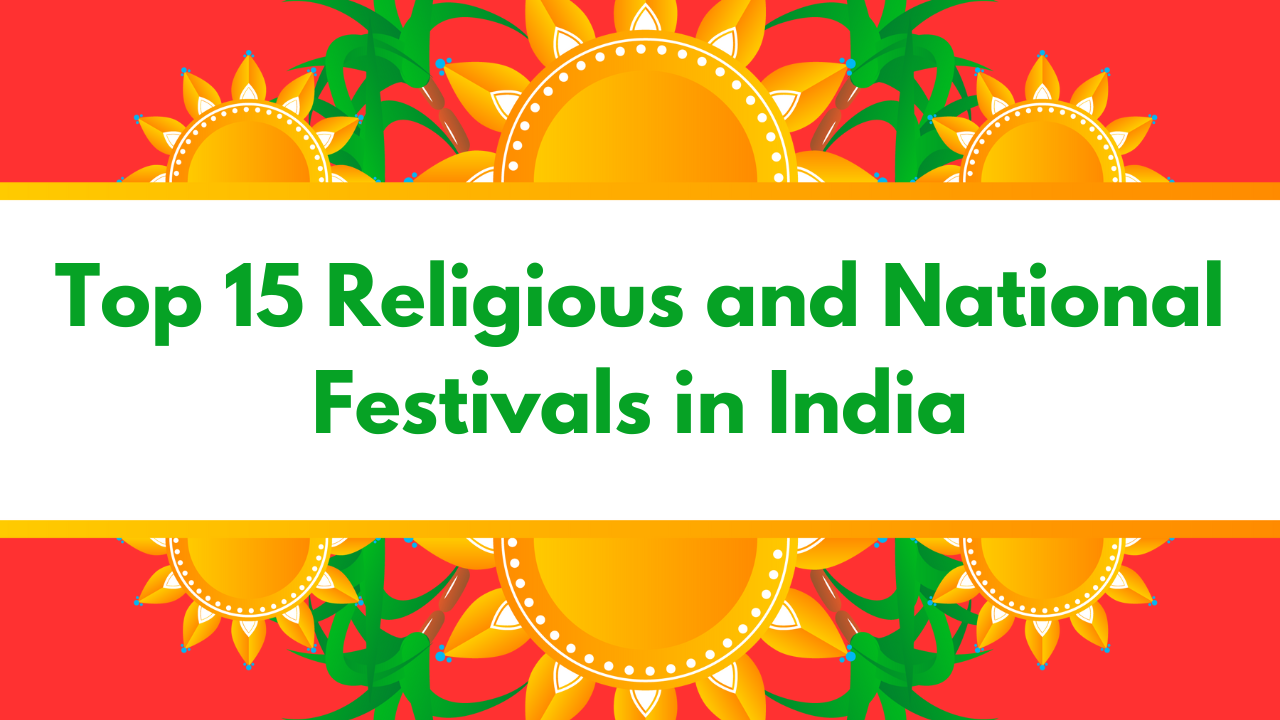
No other nation celebrates diversity as India does. The country's linguistic, religious, and cultural exclusivity sets it apart. The national festivals of India exemplify this rich and diverse culture.
India celebrates three national festivals and numerous religious festivals. As this country is home to people of different faiths, every month brings an occasion to celebrate. In this article, we have talked about religious and 15 national festivals celebrated in India.
Let us go through the national and religious festivals that create a unique identity in India:
Celebrated on August 15, Independence Day is the most important national festival of India as it commemorates India’s historic win against colonization.
On this day in 1947, India liberated itself from British Raj. After putting up a fight for over 89 years, our freedom fighters made India an independent country.
Independence Day is celebrated across the country with great zeal. The Prime Minister unfurls the national flag at the Red Fort in New Delhi. The flag-hoisting ceremony is followed by a speech by the Prime Minister.
The Indian Armed Forces and paramilitary forces perform the parade. Performers from every corner of the country put up a spectacle, showcasing the rich and diverse cultural heritage of the country.
Every school, college, university, and other institution in India commemorate this historic day by hoisting flags and organizing performances and cultural activities.
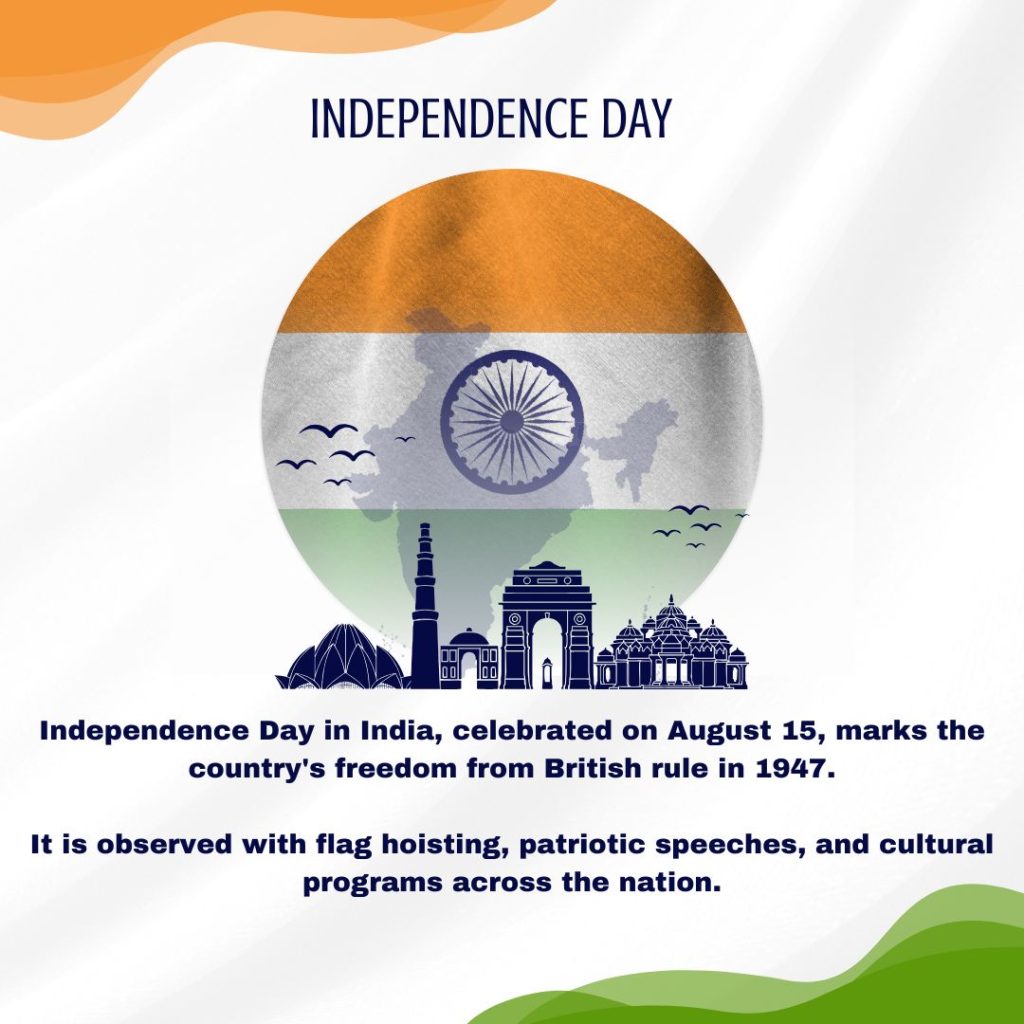
Republic Day is another national festival of India celebrated on January 26 every year. It commemorates the espousal of the Constitution of India. On this day, India transformed from being a dominion to a republic.
Before independence, the Government of India Act 1935 regulated India. It was substituted by the Constitution of India after independence, which was implemented on January 26, 1950.
The entire nation unites to celebrate this day. In New Delhi, the celebration comprises parades by troops from Army, Air Force, Navy and cultural events. Educational institutions all over the country celebrate Republic Day by organizing cultural programs.

Gandhi Jayanti is third in the list of national festivals. It marks the birthday of the Father of the Nation, Mahatma Gandhi. It is celebrated every year on October 2.
Mohandas Karamchand Gandhi, popularly known as Mahatma Gandhi, was born on 2 October 1869 in Porbandar, Gujarat.
Mahatma Gandhi’s role in the Indian Independence Movement was instrumental. He uprooted the British Empire and helped India become a free country. A strong advocate of non-violence, his birth anniversary was marked as the International Day of Non-Violence in 2007 by the United Nations General Assembly.
On this day every year, educational and government institutions remember his contributions to the struggle for independence and celebrate this day through cultural programs.

Holi is one of the main religious festivals of India, celebrated on the arrival of spring. Also called the festival of colors, this beautiful festival commemorates the eternal love of Radha and Krishna. It also marks the victory of good over bad. Several legends are associated with this colorful festival.
The festivities commence with Holika Dahan on the evening of Holi. People light a bonfire and sing and dance around it. The following day comes alive with colors, laughter, and cheers. People come together and immerse themselves in vibrant colors and pure joy.
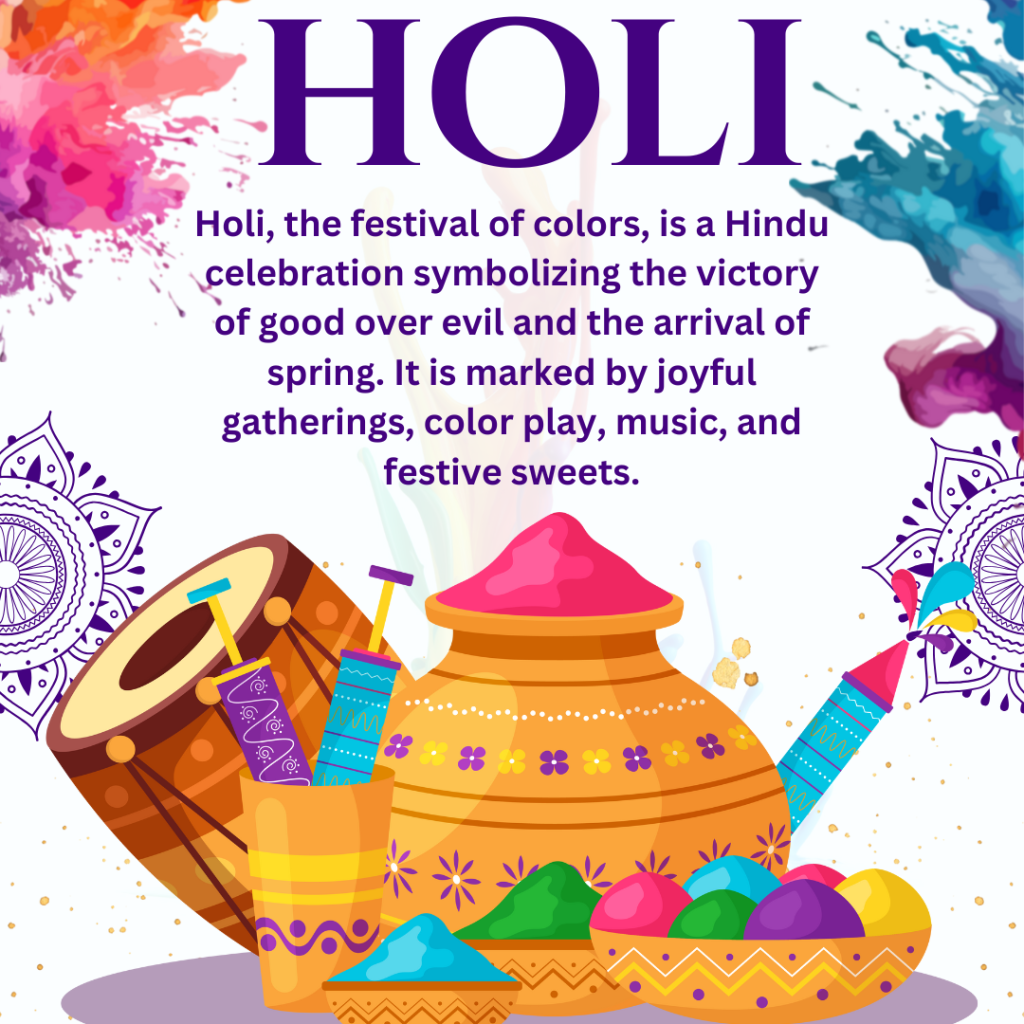
Dussehra or Vijayadashmi is a significant Hindu festival celebrated annually at the end of Navaratri and Durga Puja. People in different parts of the country and even outside the country celebrate Dussehra for various reasons. Some celebrate it to honor the victory of Lord Rama over Ravana. Some celebrate it to honor Goddess Durga’s triumph over Mahishasur. On the evening of Vijayadashmi, people burn tall effigies of Ravana with fireworks.
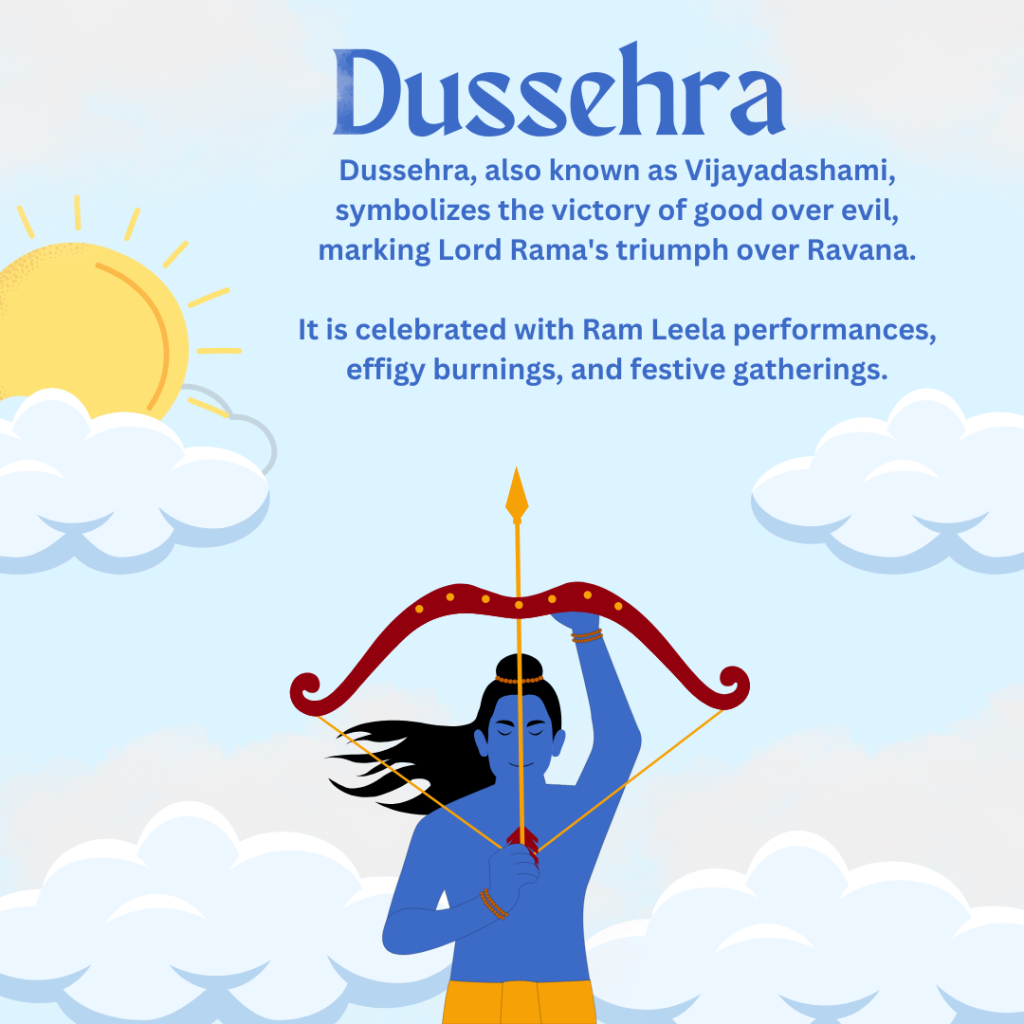
Twenty days apart from Vijayadashmi, people in India celebrate Diwali, the most important religious festival in India.
Diwali or Deepawali, the festival of lights, carries great significance in the Hindu religion. Not only Hindus, but other communities like Jains and Sikhs also celebrate Diwali with great zeal.
The festival signifies the victory of good over evil and light over darkness. On the auspicious day of Diwali, Lord Rama returned to Ayodhya after an exile of 14 long years with his wife Sita and brother Laxman after defeating Ravana in Lanka. To celebrate the arrival of Lord Rama, people of Ayodhya lit their homes with glistening diyas.
People celebrate the festival of Diwali by lighting their homes with diyas and fairy lights. Pujas are performed in every household and the sky comes alive with sparkling fireworks. People visit each other and exchange gifts and sweets.
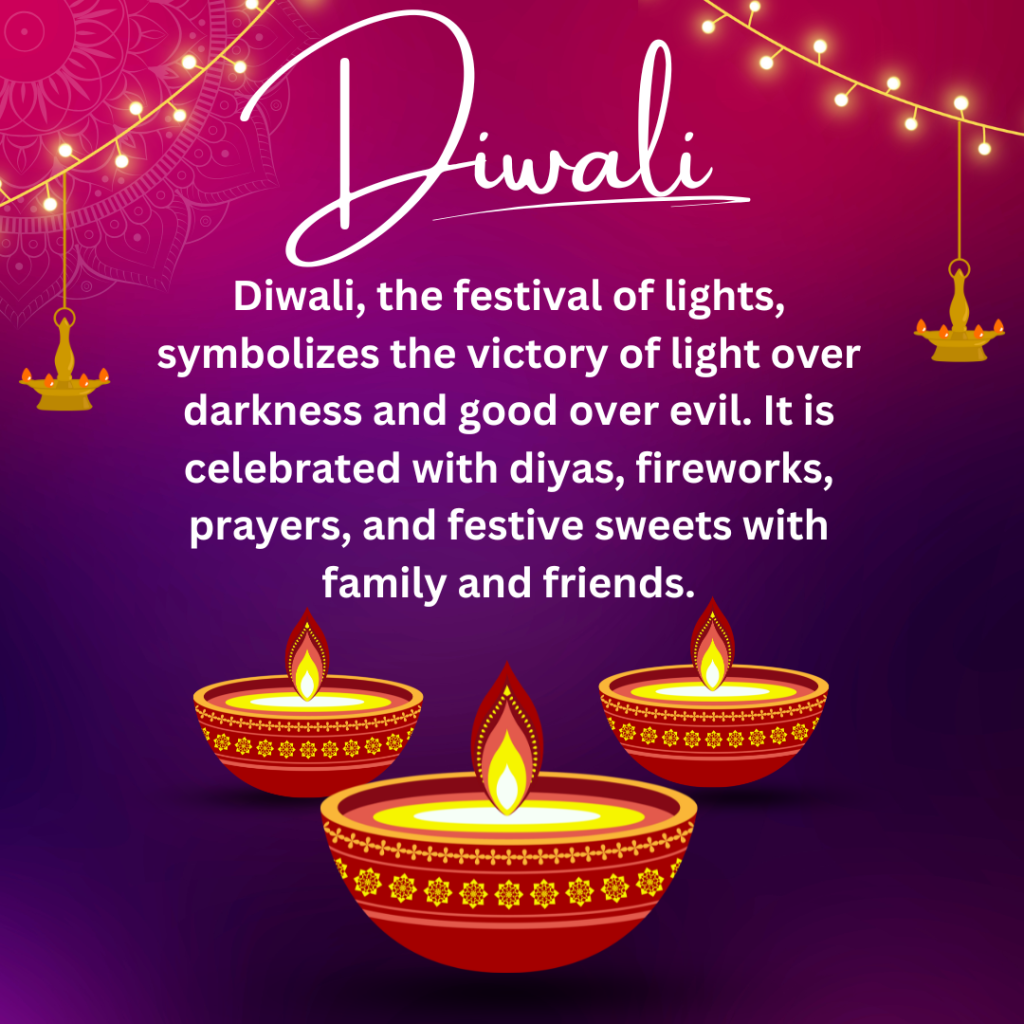
Eid-Ul-Fitr is a significant festival in India celebrated by the Muslim community. It marks the end of the holy month of Ramadan. Festivities begin in the night after the spotting of the crescent moon. The following day men perform Eid prayer at mosques and wish each other. People visit their friends and family and relish special Eid delights, such as seviyya.
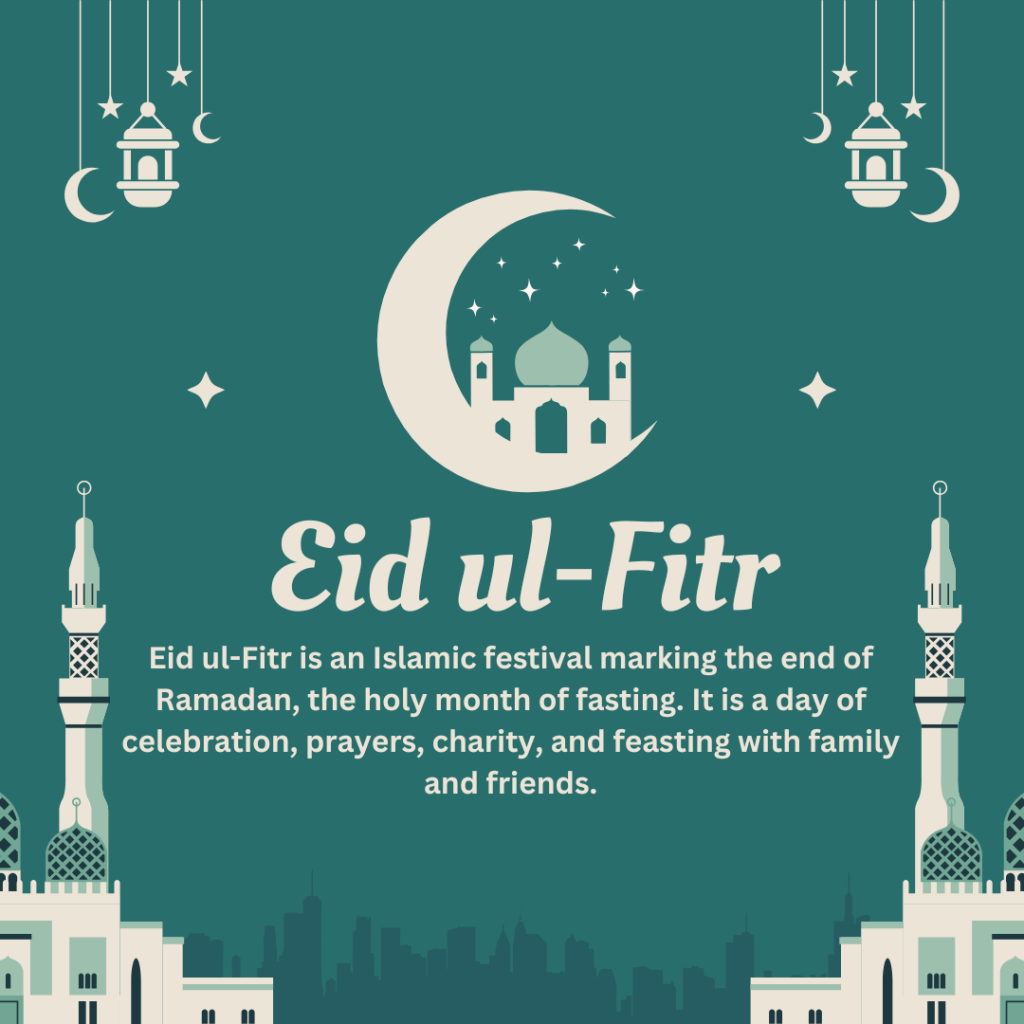
Hindus all across the country come together to celebrate the birth of Lord Ganesh on Ganesh Chaturthi. The celebration spans ten days. The festivities begin with people welcoming Lord Ganesha into their homes.
Beautiful Ganesh idols are placed in homes and public places. Cities and towns come alive with devotees flocking to the pandals and praying to Lord Ganesha. After ten days, the jubilation ends with Anantha Chaturdashi.
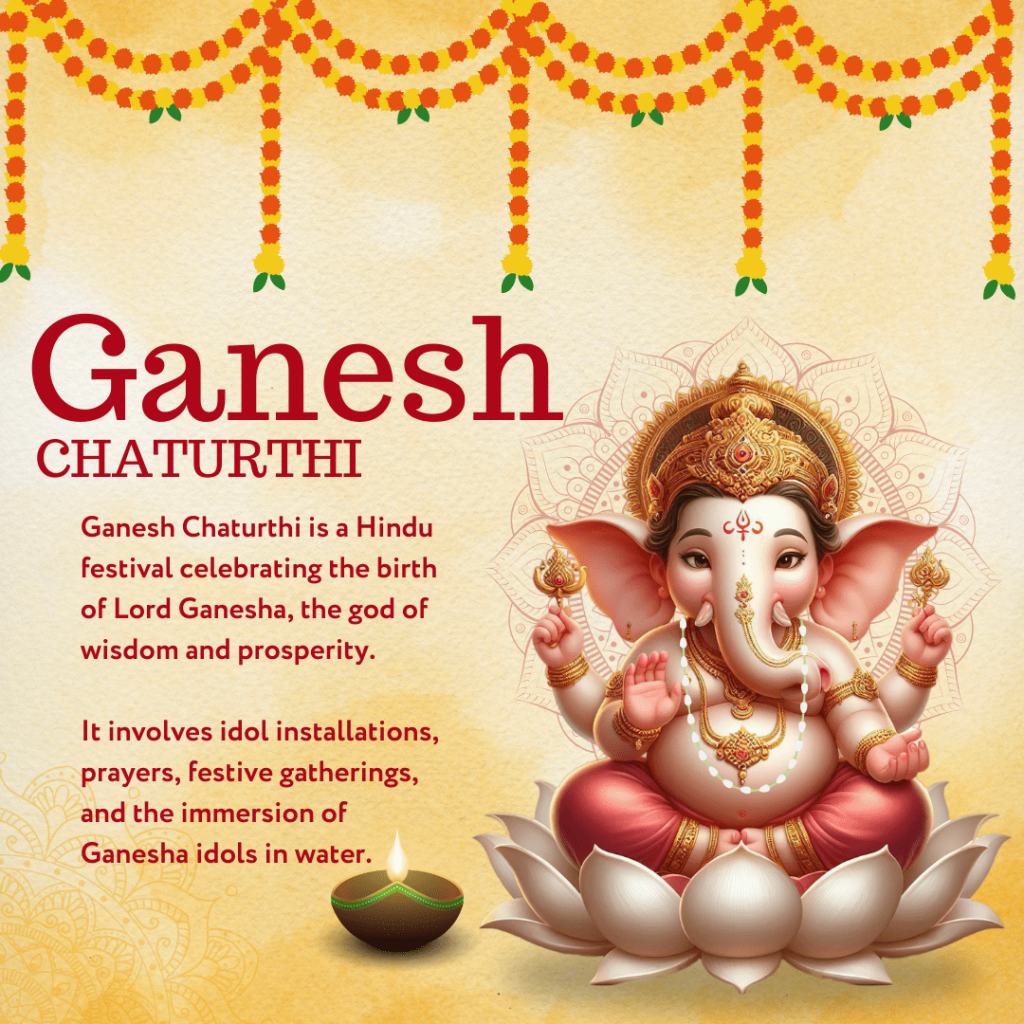
The beautiful religious festival of Raksha Bandhan celebrates the bond between brothers and sisters. On this auspicious day, sisters tie rakhi, a sacred thread, on their brothers’ wrists and brothers promise to take care of their sisters.
The festival of Rakshabandhan symbolizes love, affection, care, and responsibility. It celebrates the beautiful bond between siblings. It is celebrated on the last day of the month Shravana as per the Hindu lunar calendar.

Onam is a significant Hindu cultural festival celebrated with great fervor and enthusiasm in the Indian state of Kerala. It marks the arrival of the harvest season and also honors the return of King Mahabali after he was banished by Vamana.
This official festival of Kerala is celebrated with myriad cultural events. People decorate their homes with gorgeous floral rangolis. Cook traditional meals. Events such as boat races, dancing, etc. enliven the entire state.
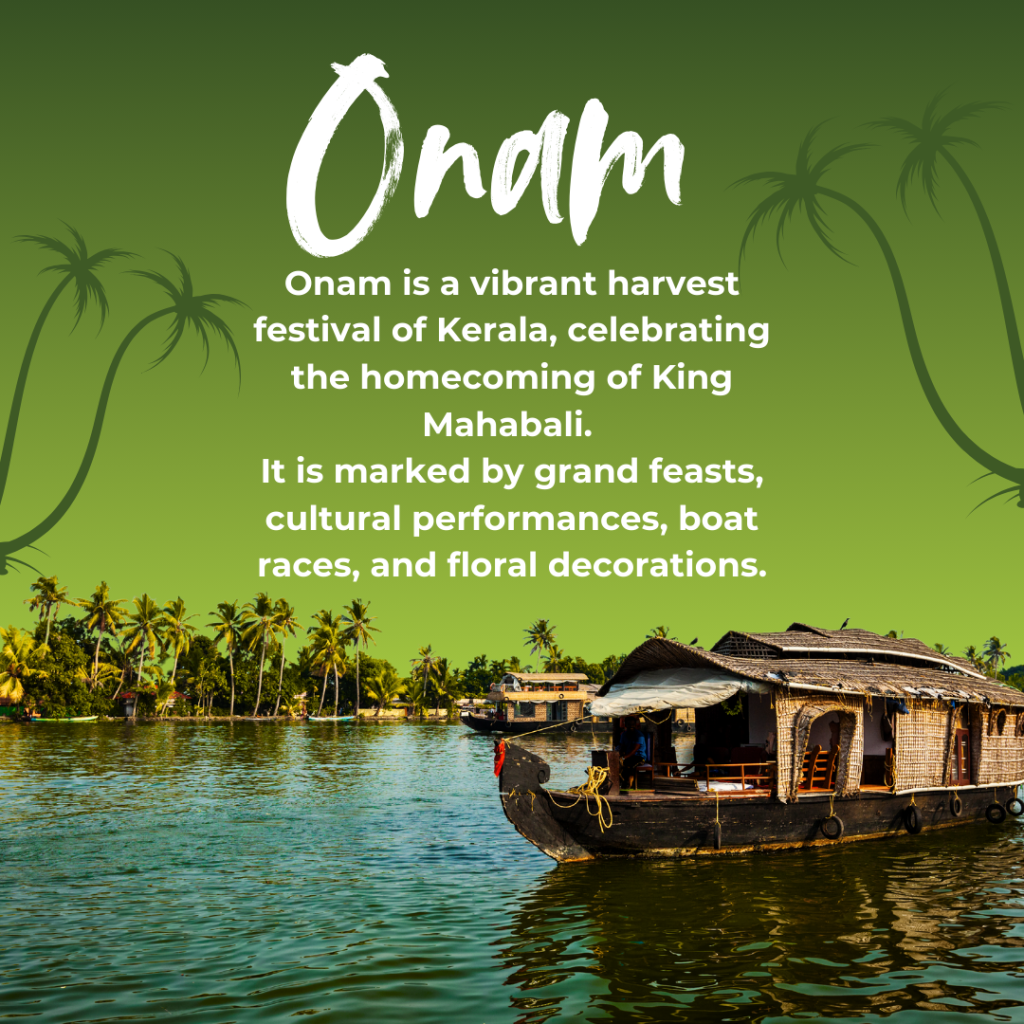
Guru Purab marks the birth of the revered Sikh saint Guru Nanak. He was the founder of the Sikh religion in India. The festival is celebrated according to the Indian lunar calendar but it generally arrives in the month of November.
The Sikh community organizes the festivities and remembers the teachings of Guru Nanak. People come together to read Guru Granth Sahib and community meals are served in Gurudwaras. Large processions are carried out which fill the air with spirituality, harmony, warmth, and brotherhood.
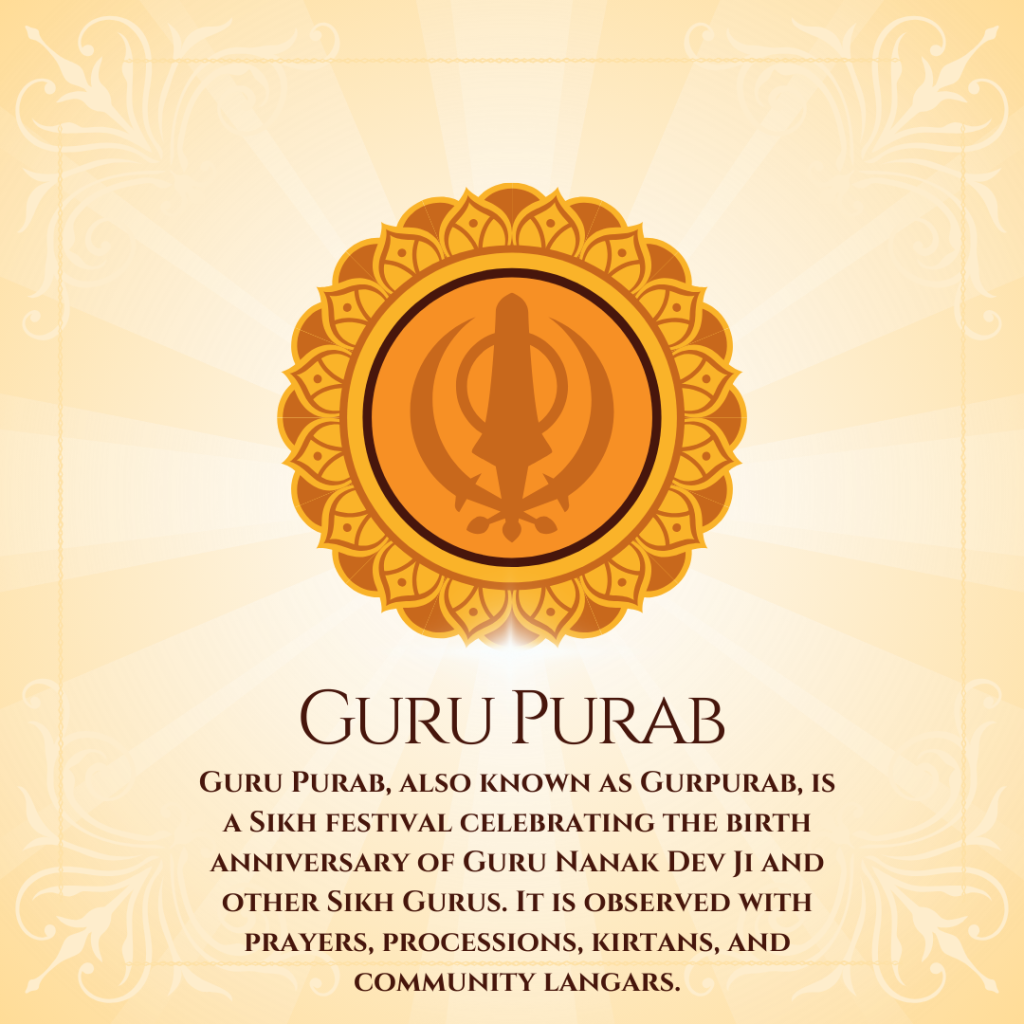
Christmas arrives every year on the December 25. It celebrates the birth of Jesus Christ. Although observed mainly by Christians, this religious and cultural celebration brings the world together. The spirit of the holiday season begins with the first Sunday of Advent.
People bring Christmas trees home and decorate them with lights and little decorations. On the day of Christmas, Churches organize prayer masses. People sing Christmas carols, exchange presents, and host dinners for family and friends.
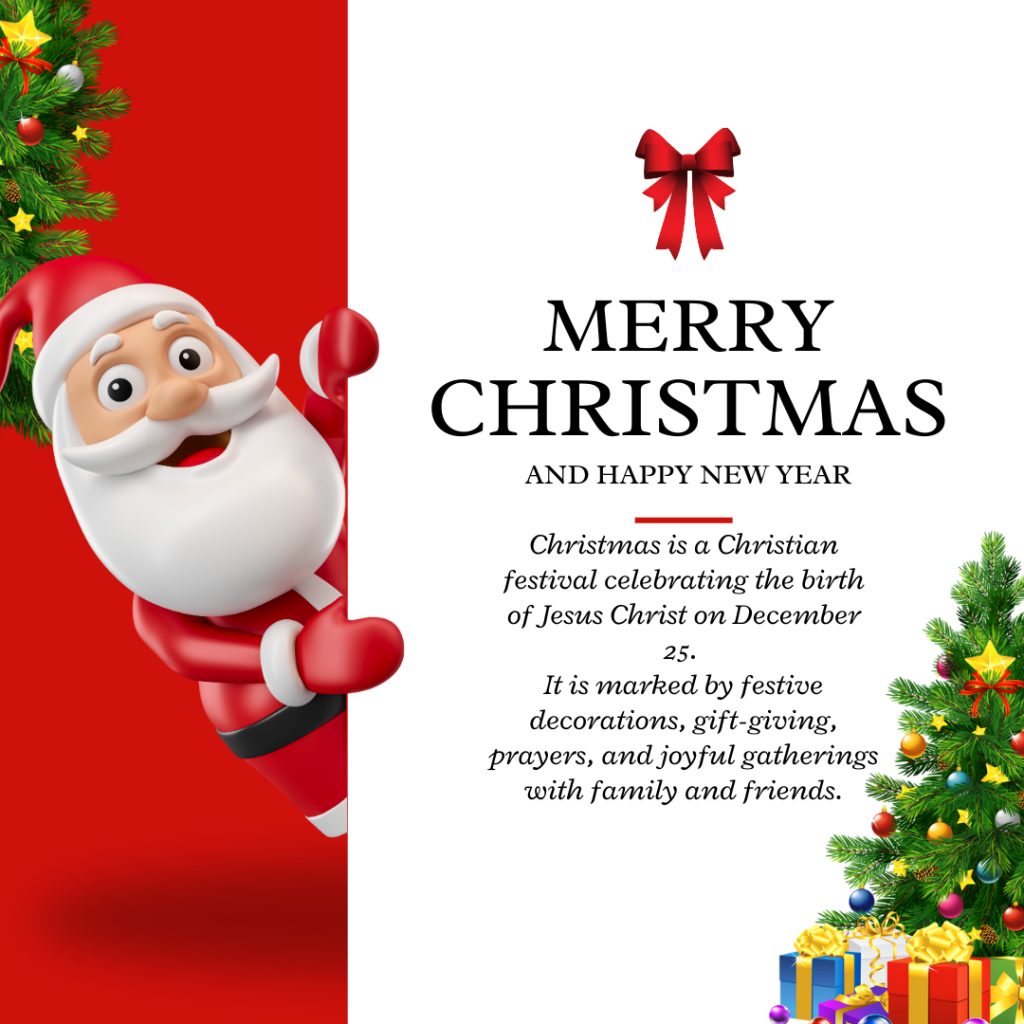
Buddha Purnima or Vesak is a significant festival for Buddhists in India and other parts of South, East, and Southeast Asia. This festival commemorates Siddhartha Gautam or Gautam Buddha.
This auspicious day is celebrated with great ardor across the country with followers visiting Buddhist shrines in large numbers and remembering Lord Buddha and his teachings. Devotees sing hymns and songs. Devotees offer special prayers at the Bodhi Tree, the tree under which Lord Buddha attained enlightenment.
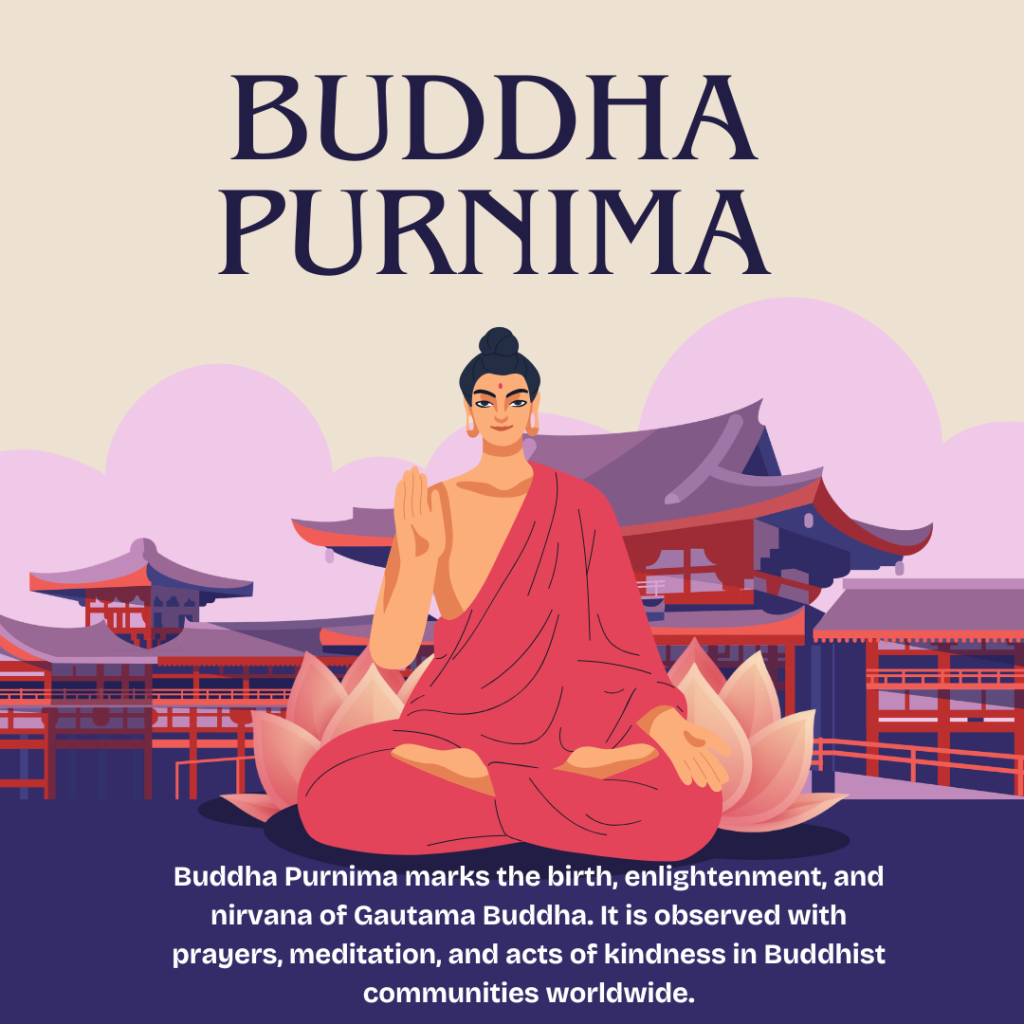
Janmashtami is another important religious festival celebrated across India. It is the celebration of the birth anniversary of Lord Krishna.
On the day of Janmashtami, devotees visit temples and worship Lord Krishna. Various cultural events take place where children dress up as Lord Krishna. Rasa-Lila or Krishna-Lila, dance-drama events are organized.
Devotees fast, pray, sing, and dance together to commemorate the birth of Lord Krishna. On the following day, Dahi Handi programs are organized in every corner of the country.
The cities of Mathura and Vrindavan welcome thousands of pilgrims. Although celebration varies according to the region and culture, the entire country comes alive with joy, love, and affection for Lord Krishna.

Baisakhi or Vaisakhi is primarily celebrated in the Indian state of Punjab on April 13 or April 14. It marks the onset of harvest season in Spring.
The cultural festival is celebrated with fairs and processions. People visit Gurudwara, hold kirtans, community meals (langar), and perform Bhangra and Giddha dances in the spirit of the festival.

At DPWS Barasat, we celebrate national festivals of India and the ones of religious significance through cultural programs and activities. Our school encourages students to come forward and participate through music, art, and dance to enrich such functions with their creativity. It not only boosts extracurricular activities but also helps them familiarize with the culture of our country.